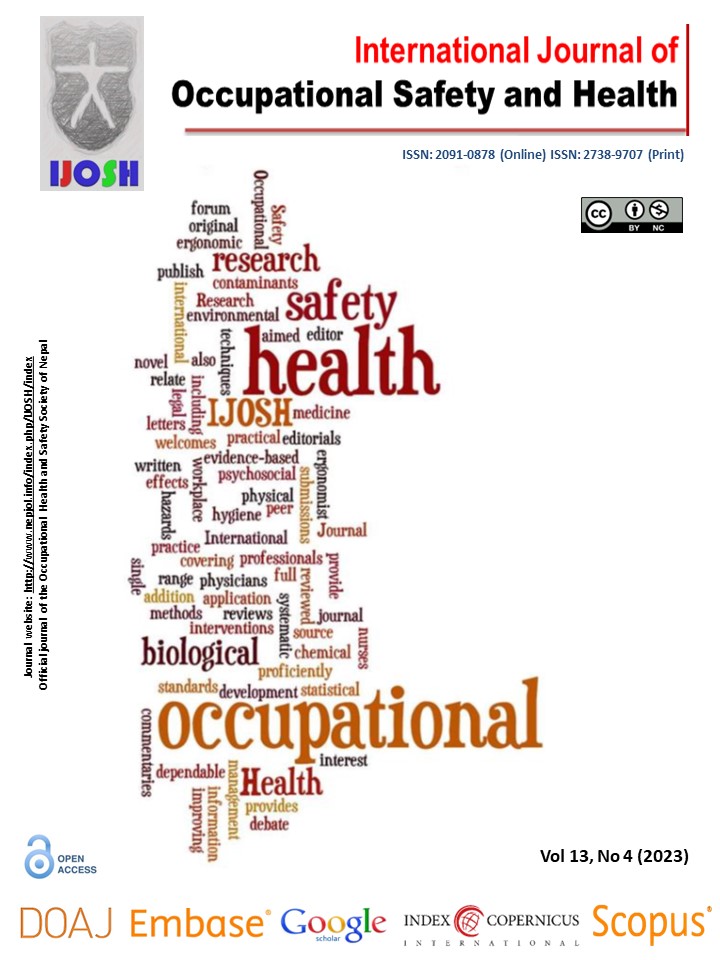Effect of Load on Upper Extremity Muscles of Agricultural Workers of West Bengal
DOI:
https://doi.org/10.3126/ijosh.v13i4.52917Keywords:
Agricultural worker, Maximum voluntary contraction, Muscular activity, Pulling and pushingAbstract
Introduction: Agricultural fields like weed management and horticultural operations are the most common and labor-intensive. Most of these tasks are completed with the help of push-pull-type agricultural machinery. The push-pull tasks are mainly done using agricultural machinery (push-pull weeders, manually operated rice transplanters or seeders, long-handled agricultural tools, etc.) by farm workers. Since these are manually operated machinery, long working hours in awkward positions are expected, which causes physical stress and musculoskeletal disorders in the operators. An electromyography study for agricultural workers during push and pull operations was conducted in this study.
Methods: To evaluate muscle activity, a laboratory test setup was developed based on the ergonomic criteria of the uniform force application. Four loads (50, 100, 150, and 200 N) and the four most used upper body muscles (middle deltoid MD, triceps brachii TR, brachioradialis BR, and biceps brachii BI) during push-pull operations were selected for an electromyographic study on twelve medically fit agricultural workers as subjects. This study attempted to minimize muscle activity, thereby reducing overexertion injuries.
Results: The most activated muscles during the pushing and pulling operations were TR and BR, respectively. The muscle activity of the TR during the pushing task was found to be 109 µV, 135 µV, 178 µV and 195 µV at loads of 50 N, 100 N, 150 N, and 200 N, respectively. During the pulling task, the muscle activity of the BR was 51 µV, 66 µV, 80 µV, and 126 µV at loads of 50 N, 100 N, 150 N, and 200 N, respectively.
Conclusion: For all subjects, a load of 200 N was found difficult to operate compared to other selected loads during push and pull operations. Muscle activation was found to increase with increasing load for each of the selected muscles.
Downloads
Downloads
Published
How to Cite
Issue
Section
License
Copyright (c) 2023 Sweeti Kumari, V. K. Tewari, Sanjeev Kumar

This work is licensed under a Creative Commons Attribution-NonCommercial 4.0 International License.
This license enables reusers to distribute, remix, adapt, and build upon the material in any medium or format for noncommercial purposes only, and only so long as attribution is given to the creator.





